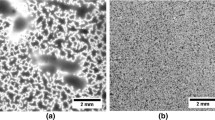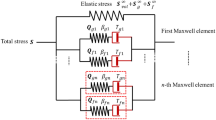Abstract
In this study, digital image correlation (DIC) was adopted to examine the mechanical behavior of arterial tissue from bovine aorta. Rectangular sections comprised of the intimal and medial layers were excised from the descending aorta and loaded in displacement control uniaxial tension up to 40 percent elongation. Specimens of silicon rubber sheet were also prepared and served as a benchmark material in the application of DIC for the evaluation of large strains; the elastomer was loaded to 50 percent elongation. The arterial specimens exhibited a non-linear hyperelastic stress-strain response and the stiffness increased with percent elongation. Using a bilinear model to describe the uniaxial behavior, the average minor and major elastic modulii were 192±8 KPa and 912±40 KPa, respectively. Poisson's ratio of the arterial sections increased with the magnitude of axial strain; the average Poisson's ratio was 0.17±0.02. Although the correlation coefficient obtained from image correlation decreased with the percent elongation, a correlation coefficient greater than 0.8 was achieved for the tissue experiments and exceeded that obtained in the evaluation of the elastomer. Based on results from this study, DIC may serve as a valuable method for the determination of mechanical properties of arteries and other soft tissues.
Similar content being viewed by others
References
Roy, C.S., “The Elastic Properties of the Artery Wall,”J. Physiol. Lond.,3,125–162 (1881).
Hayashi, K., Takamizawa, K., Nakamura, T. andTsushima, N., “Effects of Elastase on the Stiffness and Elastic Properties of Arterial Walls in Cholesterol Fed Rabbit,”Atherosclerosis,66,259–267 (1987).
Weizsacker, H.W., andPinto, J.G., “Isotropy and Anisotropy of the Arterial Wall,”J. Biomech.,21,477–487 (1988).
Carmines, D.V., McElhaney, J.H., andStack, R., “A Piece-wise Nonlinear Elastic Expression of Human and Pig Coronary Arteries Tested in Vitro,”J Biomech.,24,899–906 (1991).
Papageorgiou, G.L., andJones, N.B., “Circumferential and Longitudinal Viscoelasticity of the Human Iliac Arterial Segments in Vitro,”J. Biomed. Eng.,10,82–90 (1988).
Gentile, B.J., Chuong, C.J., andOrdway, G.A., “Regional Volume Distensibility of Canine Thoracic Aorta During Moderate Treadmill Exercise,”Circ. Res.,63,1012–1019 (1988).
Dorbin, P.B., “Biaxial Anisotropy of Dog Carotid Artery: Estimation of Circumferential Elastic Modulus,”J. Biomech.,19,351–358 (1986).
Gow, B.S., andHadfield, C.D., “The Elasticity of Canine and Human Coronary Arteries with Reference to Postmortem Changes,”Circ. Res.,45,588–594 (1979).
Michelini, L.C., andKrieger, E.M. “Aortic Caliber Changes During Development of Hypertension in Freely Moving Rats,”Am. J. Physiol.,250,H662-H671 (1986).
Hayashi, K., “Experimental Approaches on Measuring the Mechanical Properties and Constitutive Laws of Arterial Walls,”ASME J. Biomech. Eng.,115,481–488 (1993).
Zhou, J., andFung, Y.C., “The Degree of Nonlinearity and Anisotropy of Blood Vessel Elasticity,”Proc. Natl. Acad. Sci.,94,14255–14260 (1997).
Humphrey, J.D., Vawter, D.L. andVito, R.P., “Quantification of Strains in Biaxially Tested Soft Tissues,”J. Biomech.,20,59–65 (1987).
Silver, F.H., Christiansen, D.L., andBuntin, C.M., “Mechanical Properties of the Aorta: A Review,”Crit. Rev. Biomed. Eng. 17,323–358 (1989).
Chu, T.C., Ranson, W.F., Sutton, M.A., andPeters, W.H., “Applications of Digital-Image-Correlation Techniques to Experimental Mechanics,” EXPERIMENTAL MECHANICS,25,232–244 (1985).
Sutton, M.A., Chao, Y.-J., andLyons, J.S, “Computer Vision Methods for Surface Deformation Measurements in Fracture Mechanics, Novel Experimental Techniques in Fracture Mechanics,”ASME-AMD 176, 203–217 (1993).
Lu, H., Vendroux, G. andKnauss, W.G., “Surface Deformation Measurements of a Cylindrical Specimen by Digital Image Correlation,” EXPERIMENTAL MECHANICS,37,433–439 (1997).
Zhao, W., andJin, G., “An Experimental Study on Measurement of Poisson's Ratio with Digital Correlation Method,”J. Appl. Polym. Sci.,60,1083–1088 (1996).
Zhang, D., Zhang, X., andCheng, G., “Compression Strain Measurement by Digital Speckle Correlation,” EXPERIMENTAL MECHANICS,39,62–65 (1999).
Bastawros, A.-F., Bart-Smith, H., andEvans, A.G., “Experimental Analysis of Deformation Mechanisms in Closed Cell Aluminum Alloy Foam,”J. Mech. Phys. Solids,48,301–322 (2000).
McGowan, D.M., Ambur, D.R., Hanna, T.G., andMcNeill, S.R., “Evaluating the Compressive Response of Notched Composite Panels Using Full-field Displacements,”J. Aircraft,38,122–129 (2001).
Tong, W., “Detection of Plastic Deformation Patterns in a Binary Aluminum Alloy,” EXPERIMENTAL MECHANICS,37,452–459 (1997).
Wattrisse, B., Chrysochoos, A., Muracciole, J.-M., andNemoz-Gaillard, M., “Analysis of Strain Localization During Tensile Tests by Digital Image Correlation,” EXPERIMENTAL MECHANICS,41,29–39 (2001).
Bruck, H.A., McNeill, S.R., Sutton, M.A., andPeter, W.H. “Digital Image Correlation Using Newton-Raphson Method of Partial Differential Correction,” EXPERIMENTAL MECHANICS,29,261–267 (1989).
Schreier, H.W., Braasch, J.R., andSutton, M.A., “Systematic Errors in Digital Image Correlation Caused by Intensity Interpolation,”Opt. Eng.,39,2915–2921 (2000).
www.correlatedsolutions.com/videoextensometer/
Zhang, D., and Arola, D., “A New Fast-search Strategy for Digital Image Correlation,” Proc. SEM Annual Conference on Theoretical, Experimental and Computational Mechanics, Milwaukee, Wisconsin, June 10–12, 2001, Paper No. 80.
Sutton, M.A., Chae, T.L., et al.,“Development of a Computer Vision Methodology for the Analysis of Surface Deformations in Magnified Images,” ASTM STP-1094, MICON-90, 109–132 (1990).
Taber, L.A., Humphrey, J.D., “Stress Modulated Growth, Residual Stress, and Vascular Heterogeneity,”ASME J. Biomech. Eng.,123,528–535 (2001).
Greenwald, S.E., Moore, J.E., Rachev, A., Kane, T.P.C., andMeister, J.-J., “Experimental Investigation of the Distribution of Residual Strains in the Artery Wall,”ASME J. Biomech. Eng.,119,438–444 (1997).
Fung Y.C., “Biomechanics. Mechanical Properties of Living Tissues,” 2nd edn, Springer, 1993.
Author information
Authors and Affiliations
Rights and permissions
About this article
Cite this article
Zhang, D., Eggleton, C.D. & Arola, D.D. Evaluating the mechanical behavior of arterial tissue using digital image correlation. Experimental Mechanics 42, 409–416 (2002). https://doi.org/10.1007/BF02412146
Received:
Revised:
Issue Date:
DOI: https://doi.org/10.1007/BF02412146




